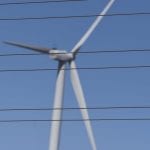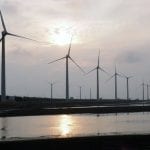Around The Web
UNSW deal for next generation solar cells to help halve cost of solar power
 UNSW deal for mass-production of next generation solar cells will help cost of solar power – already the cheapest in the world – to halve again.
UNSW deal for mass-production of next generation solar cells will help cost of solar power – already the cheapest in the world – to halve again.
The post UNSW deal for next generation solar cells to help halve cost of solar power appeared first on RenewEconomy.
Calls for inquiry into protected Queensland wetlands development assessment
FOI documents show Josh Frydenberg rejected department advice that developing the area was ‘unacceptable’
Environment groups have called for an independent probe into the government’s assessment of an apartment and marina development on protected wetlands in Queensland.
It comes after revelations the former environment minister Josh Frydenberg rejected advice from the environment department that the development was “clearly unacceptable”.
Continue reading...WA backflips, reveals plan to develop new state climate policy
 Just weeks after saying it wouldn't, McGowan government reveals plans to release a new, explanded and upgraded climate policy over the next 12 months.
Just weeks after saying it wouldn't, McGowan government reveals plans to release a new, explanded and upgraded climate policy over the next 12 months.
The post WA backflips, reveals plan to develop new state climate policy appeared first on RenewEconomy.
Energy minister’s wife says rolling blackouts needed to teach lefties a lesson
 Energy minister's wife says rolling blackouts are needed to prove left-wing populist policies are wrong.
Energy minister's wife says rolling blackouts are needed to prove left-wing populist policies are wrong.
The post Energy minister’s wife says rolling blackouts needed to teach lefties a lesson appeared first on RenewEconomy.
First South Australian road built with plastic bags and glass
 The first South Australian (SA) road built with soft plastics and glass at Happy Valley in the City of Onkaparinga will see plastic from approximately 139,000 plastic bags and packaging and 39,750 glass bottle equivalents diverted from landfill.
The first South Australian (SA) road built with soft plastics and glass at Happy Valley in the City of Onkaparinga will see plastic from approximately 139,000 plastic bags and packaging and 39,750 glass bottle equivalents diverted from landfill.
The post First South Australian road built with plastic bags and glass appeared first on RenewEconomy.
Solar Insiders Podcast: The RCR collapse; and two great new solar initiatives
 This week we go to Sundowners, discuss the collapse of RCR, and interview Andrea Gaffney from Planet Renewables, and Chris McGrath from solar innovators 5B.
This week we go to Sundowners, discuss the collapse of RCR, and interview Andrea Gaffney from Planet Renewables, and Chris McGrath from solar innovators 5B.
The post Solar Insiders Podcast: The RCR collapse; and two great new solar initiatives appeared first on RenewEconomy.
The verdict is in: Renewables reduce energy prices (yes, even in South Australia)
 Our research finds, emphatically, that in electricity there is no dilemma between decarbonisation and lower wholesale prices. The “tri-lemma” concept is already past its prime.
Our research finds, emphatically, that in electricity there is no dilemma between decarbonisation and lower wholesale prices. The “tri-lemma” concept is already past its prime.
The post The verdict is in: Renewables reduce energy prices (yes, even in South Australia) appeared first on RenewEconomy.
Shell unveils new climate targets, links them to executive pay
 British-Dutch oil and gas megalith reveals plan to develop new, shorter-term Net Carbon Footprint targets – that will be tied to executive remuneration.
British-Dutch oil and gas megalith reveals plan to develop new, shorter-term Net Carbon Footprint targets – that will be tied to executive remuneration.
The post Shell unveils new climate targets, links them to executive pay appeared first on RenewEconomy.
CP Daily: Wednesday December 5, 2018
Climate change: Warming made UK heatwave 30 times more likely
Friskier frogs: endangered species gets a sex appeal boost
Australian researchers have a new way to increase desire in the northern corroboree frog
Australian researchers are applying a sex hormone to the skin of the critically endangered northern corroboree frog in a world-first treatment to encourage females to accept less desirable mates in captivity.
A trial conducted by the University of Wollongong and Taronga zoo found that, by administering the hormone to both a male and female frog before pairing them off, researchers could increase the chance that they would accept their allocated partner from about 22% to 100%.
Continue reading...Canada’s BC unveils long-term climate strategy aimed at electrification
EU Market: Dip-buyers fail to keep EUAs above €20, with more downside forecast
Northern Bettong at serious risk of extinction
Poland to nearly double 2019 auction quota with surprise EUA sale notice
California utilities push for delay to EIM rules in cap-and-trade amendments
COP24: Article 6 text slashed in half as UN talks begin in earnest
Carbon emissions will reach 37 billion tonnes in 2018, a record high
The verdict is in: renewables reduce energy prices (yes, even in South Australia)
Sea levels may rise more rapidly due to Greenland ice melt
Run-off from vast ice sheet is increasing due to manmade global warming, says study
Rising sea levels could become overwhelming sooner than previously believed, according to the authors of the most comprehensive study yet of the accelerating ice melt in Greenland.
Run-off from this vast northern ice sheet – currently the biggest single source of meltwater adding to the volume of the world’s oceans – is 50% higher than pre-industrial levels and increasing exponentially as a result of manmade global warming, says the paper, published in Nature on Wednesday.
Continue reading...


